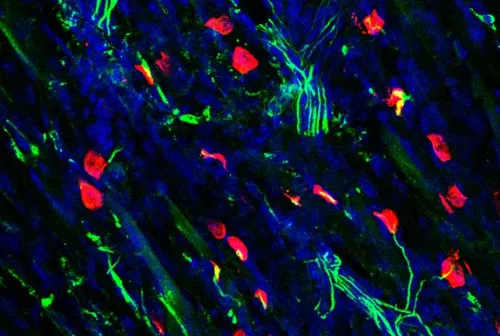A new molecule to counteract sarcopenia in the eldelrly

What is sarcopenia e which are the available treatments?
It is a condition characterized by the loss of muscle mass and strenght due to aging: over 65 years, sarcopenia affects more than 40% of individuals. In the elderly, it represent one of the most important risk factors in terms of falls, disability and mortality. It is possible try to prevent sarcopenia or delay its occurrence by exercising and following a proper diet.
Until today, effective pharmacological treatments are not available: the only option involves increasing muscle mass by inhibiting myostatin, a protein that normally limits muscle fiber growth. By inhibiting myostatin, muscle can gain volume. However, the significant increase in muscle mass induced in patientas is not sufficient to ensure prolonged muscle performance beyond momentary effort.
ActR-Fc-nL G3: a new effective therapeutic option for sarcopenia.
For years, at the Neuroscience Institute Cavalieri Ottolenghi (NICO), new therapeutic strategies have been studied to counteract sarcopenia at the preclinical level, in collaboration with the Swiss company Pharmafox Therapeutics. Recently, Professor Boido e Doctor Schellino (affiliated with NICO and the Department of Neuroscience, Univeristy of Turin) https://www.nico.ottolenghi.unito.it/Ricerca/Gruppi-di-ricerca/Sviluppo-e-patologia-del-cervello) have published an interesting study in the journal Aging and Disease. Using an older mouse model, called ActR-Fc-nLG3, which in addition to acting on myostatin also aims to improve muscle innervation.
Indeed, the muscles to contract must be properly innervated by motoneurons (specific neurons responsible for sending and trasporting movement signals). ActR-Fc-nLG3 promotes the innervation of muscles made hyperthophic by myostatin inhibition, ensuring prolonged endurance during physical exertion. Compared to conventional treatment, the administration of ActR-Fc-nLG3 is capable of improving the stability of neuromuscular joints (the points of contact between motoneurons and muscle fibers) and their innervation, preventing muscle atrophy: this allowed an improvement in motor performance, and in particular an increase in strenght and resistance to prolonged physical exertion in mice treated with ActR-Fc-nGL3.
The application of this approach could also be extended to other diseases similarly characterized by muscle atrophy and innervation deficits, such neuromuscular diseases (including Amyotrophic lateral Sclerosis and Spinal Muscular Atrophy), thereby expanding its potential use across a broad range of conditions.
Copyright: © 2023 Schellino R. et al. This is an open-access article distributed under the terms of the Creative Commons Attribution
License, which permits unrestricted use, distribution, and reproduction in any medium, provided the original author and source are credited.


